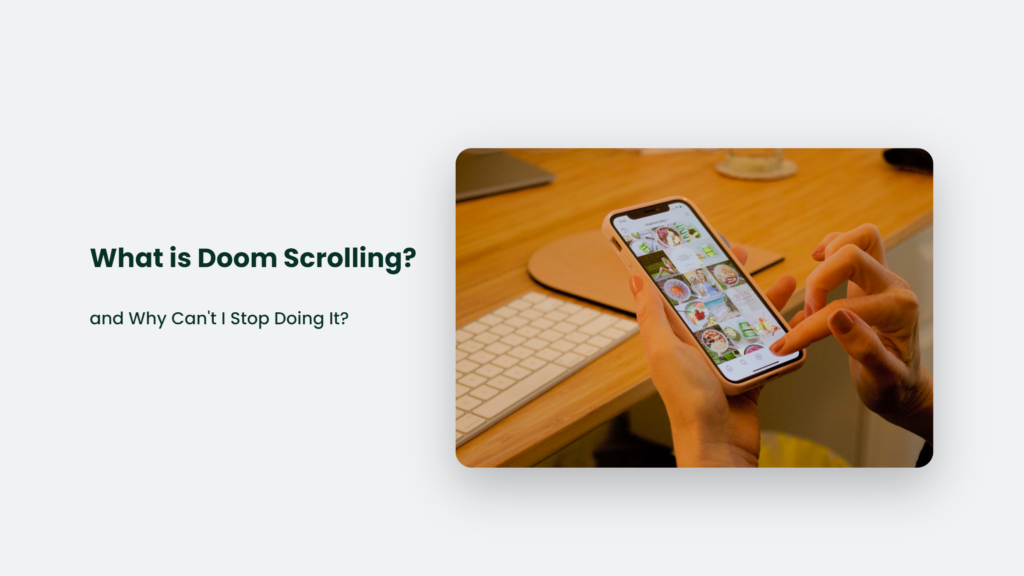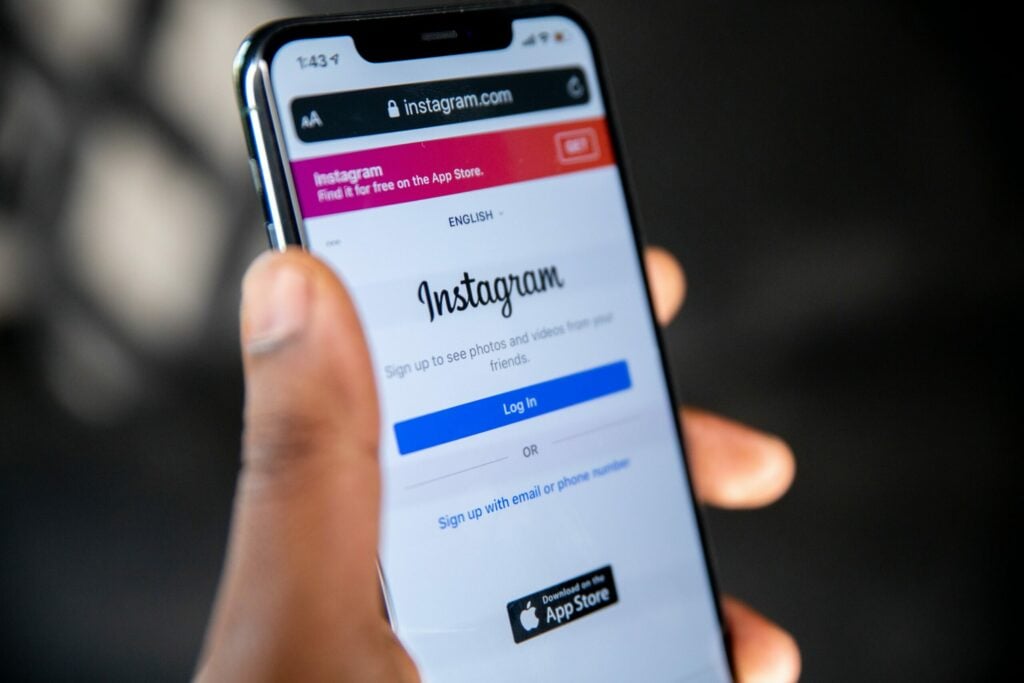Doom scrolling. Sounds like some nerdy Dungeons and Dragons shit, right? But no, my friend. Doom scrolling is a very serious issue facing our society today. And I’m not just talking about those social media-addicted teenagers. I’m talking about full-grown damn adults like you and me.
We’re all doing it.
So, What is Doom Scrolling?
Mindlessly scrolling through an endless feed of bad news, disasters, arguments, and general hopelessness. The world’s going to shit, and we can’t peel our eyes away from the car crash.
But why? Why do we torture ourselves like this? And more importantly, how the hell do we make it stop??
Well, buckle up, buttercup. We’re going on a journey to the depths of the human psyche. It is the story of how doom scrolling is slowly pickling our brains and what you can do about it before you permanently pickled.

Our Brains are Wired for Negativity
Here’s the thing. Our minds are naturally drawn to negative information. It’s called negativity bias, and it’s an evolutionary survival mechanism.
Focusing on the bad stuff kept us alive in our caveman days. If Og heard there was a saber-tooth tiger on the prowl, you bet your ass he was paying attention. Those who ignored threats didn’t live long enough to pass on their positivity-loving genes.
So we’re all descendants of the Ogs who stayed vigilant for danger. And that negativity bias is still deeply embedded in our psychology today.
Bad news grabs our attention more than good news. Studies show we remember negative events more vividly and in greater detail. It takes five positive interactions to balance out the effect of one negative interaction.
Our brains are just built to focus on the bad. It’s human nature.
And nowhere is this negativity bias more evident than in the media. “If it bleeds, it leads”, as they say in the news business. Fear and outrage generate more clicks, shares, and money for media companies.
So they plaster the scary, upsetting stuff on their home pages and social feeds. More eyeballs, more revenue. But at what cost to our mental health?
Enter the Age of Endless Information
Now, let’s add the internet and smartphones into the mix.
Suddenly, we can access an endless stream of information 24/7 from our pockets. And a lot of that information just so happens to be – you guessed it – negative.
Disasters, conflicts, division, gloom and doom as far as the eye can see. The car crash we can’t look away from multiplied by a thousand.
Our negativity bias draws us to the most upsetting stuff. Social media algorithms figure that out and serve us more of it. The news media latches on to the stories that will get the most attention – the dangerous, divisive, dramatic ones.
It’s a perfect storm of technology and psychology teaming up to feed our appetite for doom.
And so we end up “doomscrolling” – endlessly scrolling through one piece of bad news after another, unable to stop the masochistic misery.
Doomscrolling is Like Junk Food for Your Brain
In many ways, doomscrolling is like shovelling down junk food. It provides a quick hit of satisfaction but leaves you feeling like crap afterwards.
The drama and outrage give our bored brains a little rush. “Oooh, this is outrageous! I need to keep reading and find out what happens!” We crave that emotional spark.
But then, once we come up for air, we’re left feeling anxious, depressed, and overwhelmed by how shitty the world seems.
Just like junk food wrecks our bodies over time, doomscrolling wrecks our minds. Studies show it increases stress, anxiety, depression, and insomnia. And get this – the more we doomscroll, the more anxious and depressed we get. And the more anxious and depressed we get, the more we doomscroll to distract ourselves from those shitty feelings.
It’s a vicious friggin cycle that gets harder and harder to break out of. Like quicksand slowly sucking you under.
How to Break the Doomscrolling Addiction
Alright, so doomscrolling sucks. We get it. But how the hell do we stop? First, go easy on yourself. It is an actual addiction you’re trying to break, like quitting smoking or giving up booze. It ain’t easy. Be patient, and don’t beat yourself up.
Next, start paying attention to when and why you doomscroll. Notice the triggers and patterns. For most of us, it happens late at night when we can’t sleep or are bored. Understanding the habit is the first step to changing it.
When you start to doomscroll, force yourself to stop and do something else – preferably offline and active. Go for a walk, play with your dog, work out, meditate. Anything to break the spell.
Delete tempting apps off your phone and tablet if you have to. Put them on a back screen so they’re less convenient to access.
Fill your time with more positive distractions – books, podcasts, hobbies, spending time with family and friends (in person, not online!). Starve the doomscrolling beast.
Set limits on how much news you consume each day. And make sure to balance out the negative stories with positive ones. Follow journalists who cover solutions, innovations, and everyday heroes, not just disasters.
Share funny memes and uplifting stories with your friends and family. Spread some light to balance out the darkness.
The doomstream is always flowing. But we don’t have to drown in it. We can break the addiction cycle and reclaim our peace of mind with vigilance and self-care.
It’s not easy. But just imagine how good it will feel NOT to spend hours of your precious free time marinating in misery!
You got this. Now put down the damn phone and go pet your dog.
Frequently Asked Questions:
What are some symptoms of doomscrolling addiction?
– Losing track of time while scrolling through bad news
– Feeling anxious, angry, depressed, or overwhelmed after a scrolling session
– Having trouble sleeping after doomscrolling, especially at night
– Constantly checking for updates and notifications
– Neglecting responsibilities or activities because you’re glued to your phone
What are the negative effects of doomscrolling?
– Increased stress, anxiety, depression, and other mental health issues
– Disrupted sleep schedules and less restful sleep
– Decreased attention span and productivity
– Skewed, overly negative perception of world events
– Desensitization to disturbing news and imagery
In Conclusion
Doomscrolling is a tough habit to break in our current age of information overload. But the mental health benefits make it worth the effort.
Start paying attention to scrolling triggers. Fill time with positive activities. Seek support from loved ones. And don’t hesitate to get professional help if needed.It may feel impossible at first. But take it one day at a time. With commitment and self-compassion, you can break free of the doomscroll spiral.
Now go enjoy some fresh air and human connection. Your brain will thank you.




